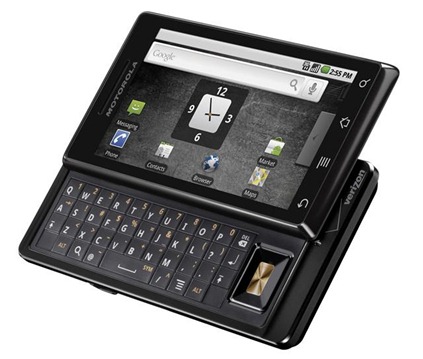After two years of iPhone ownership, I’ve awaited the September iPhone event with much anticipation, eager to see what Apple is going to deliver. I’ve been fortunate enough to get day-of-launch devices through my participation in the iPhone Upgrade program, satisfying my geeky indulgence of having the cutting-edge phone as soon as possible. However this year, with the launch of the iPhone X alongside the iPhone 8, a huge wrench got thrown into my plans. After watching too many “first reaction” videos and finally having the Reality Distortion Field effects ware off, I’ve decided to forgo the iPhone X and opted for the iPhone 8 Plus. There are a few factors that weighed into my decision, while much ado has been made about the cost, it wasn’t really a factor in my decision.
I’m not sold on FaceID
Take away the Zapruder-Film-Level scrutiny that’s going on with the “Demo Fail”, I’m just not convinced that FaceID is going to deliver the benefit over the drawbacks for not having TouchID. When phones started introducing fingerprint sensors, they were replacing PIN-unlocking – or for many users: nothing. Even if/when TouchID doesn’t work, it defaults back to the previous level of authentication. As other phones have tried face scanning, it seems that many still provide a fingerprint sensor, but Apple has gone all in with the face detection.
Let’s assume FaceID works at least as well as TouchID (and I’m not convinced that night-time phone unlocking is going to be reliable or pleasant), unlocking a phone with FaceID is going to require more attention and friction than TouchID. Gone will be any opportunity to inconspicuously unlock your phone and triage a notification, you’re going to need to intentionally look at your bright screen to unlock your phone. It’s also not clear to me how to differentiate between an intentional unlock request and an accidental unlock. Take Apple Pay, for instance: there have been a few times where I didn’t mean to get to the Apple Pay prompt and was glad I didn’t have my finger on the home screen. How long will it be before we see stories about people making accidental in-app or Apple Pay purchases?
Don’t get me wrong, FaceID looks cool – but it seems like a solution in search of a problem, and the fact that you don’t get a choice between TouchID and FaceID in the same phone is problematic.
iPhone 8 Plus still seems like a great phone
From what I can tell, aside from the OLED display, the biggest differentiator between the iPhone 8 Plus and the X are all the sensors associated with FaceID. Given that I’m not interested in FaceID, that leaves me missing out on the Animoji- which I likely wouldn’t use much due to the fact that I’M A GROWN-ASS MAN! Maybe there will eventually be a compelling app that will utilize all of those sensors effectively and give me FOMO next spring, but I’m willing to take that risk.
The iPhone 8 and X share the same processor, and the 8 Plus has the same dual cameras (although I’ve read that the X’s has slightly better low-light performance). It’s not clear if there’s a RAM differentiation, but I’m willing to bet it won’t be significant. Of course, the Plus has the larger form-factor, but I’m not necessarily clamoring for a smaller phone. Apple did toss iPhone 8 users a bone and did offer wireless charging so there’s that.
No-Bezel OLED sounds great, but I don’t know what I’m missing
That screen sounds (and looks) great, but given the way I consume content on my phone (mostly through Podcasts, Social Media, Email and slight gaming), it doesn’t really feel like I’ll be missing out all that much. It’d be one thing if I were watching a lot of 4k content on my phone, but that doesn’t appeal to me. I agree that Apple’s bezels make the phone look dated, but I’m not sure if the “notch” at the top and the absence of the home button was the right way to solve that problem. I think both app-makers and users alike will be going through growing pains through the next year to figure out the new interface.
I’m not willing to wait until November (or even longer)
Make one thing clear: if Apple could have released the phone at some semblance of scale in September, they would. There have been rumors for months that OLED production has delayed the iPhone X. Apple, who is not willing to set delivery expectations, to begin with (just ask AirPod fans), will likely not be able to meet up the pent-up demand for the iPhone X. When the X goes on PreSale on October 27, the question will be whether it’ll be a matter of seconds – not minutes – before it sells out. At that point, only a few lucky few X fans will actually get their phones on Nov 3. I’m willing to bet that there will be folks who intended to buy on the X on October 27 will be waiting into 2018 before they can get their coveted device.
This brings me back to the Apple Upgrade Plan. Apple Upgrade enables users to trade in their phone if they’ve made 12 of the 24 payments on their current device. They can elect to trade it in early but will be required to pay whatever amounts gets them to the equivalent of 12 payments. I’m willing to bet that when the iPhone XI comes out in 2018, it’s not going to be November, but all the people who value having the latest in greatest will be paying at least 2 months worth of payments early as a luxury tax. I don’t fault people who are willing and can afford that, but to me, it’s just not worth it, especially in light of all of the doubts I have about FaceID.
There was a time where I cared deeply about having the latest and greatest, where I loved being an early adopter and a beta tester. Maybe it’s part of me getting older and having kids, but that priority is now subject to elevated scrutiny. Given the level of unknowns here, I’m not willing to pay the extra $200 just to be an early-adopter of technology that I’m not very enthusiastic, to begin with. If you get very excited about the iPhone X, more power to you, but I just wanted to point out that there are valid reasons (besides cost), to stick with the 8 and watch the bugs shake out until next September.



